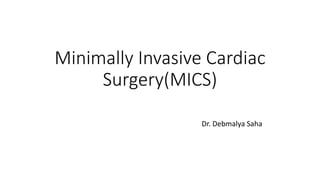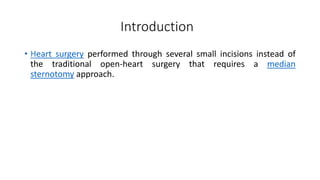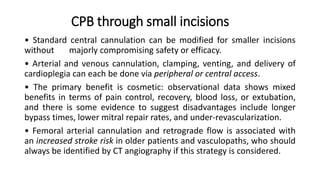The document describes the history and evolution of minimally invasive cardiac surgery, including early procedures using smaller incisions rather than full sternotomy, and the development of techniques like port-access bypass which use peripheral cannulation and an endoaortic balloon to occlude the aorta and allow procedures like CABG or mitral valve surgery to be done through smaller incisions. It also covers the various approaches and techniques used for minimally invasive procedures, as well as patient selection considerations and how to harvest vessels like the LIMA through smaller incisions.


















































